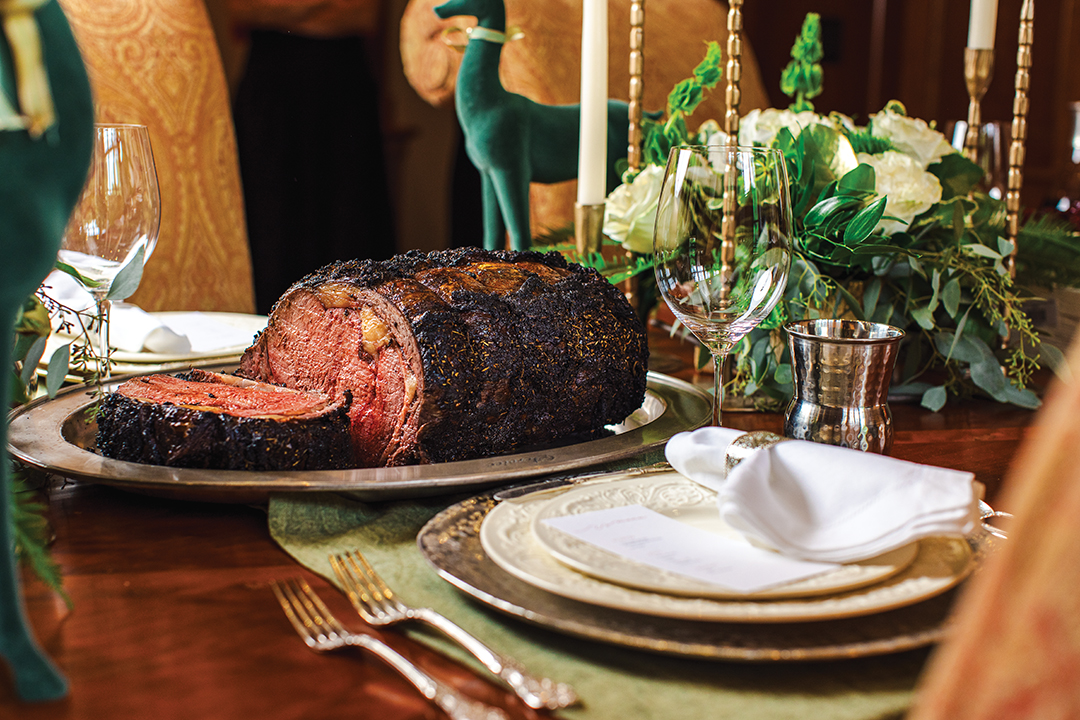
Illustrations: Em Handy
Enjoy the uniquely northern sport of ice fishing.
With a motto that aptly states, “Land of 10,000 Lakes,” well, we all know just how important those glistening and gleaming bodies of water are to us in the bold north. We swim in them, we boat on them, we picnic around them, we catch fish in them. And we don’t let Old Man Winter with his decidedly-icy-and-sometimes-irritatingly-long-grip to deter us from dropping a line and catching a big one—nope!
In fact, we relish it.
We bundle up. We head to the frozen lake. We drill a hole. We bait a hook and drop a line. And we hope for a hungry or inquisitive fish to find that bait just so dang irresistible that it takes a nibble and, voila, a fish is on the line.
This process of catching fish on a frozen body of water, of course, has been going on for at least two millennia as a way for folks to eat when the weather cooled, and food became scarce. But now, ice fishing is mostly done as a hobby, a way to spend time relaxing alone or with friends or family, or for sport. Many Minnesota cities and towns hold well-attended ice fishing contests; the Minnesota Department of Natural Resources (DNR) notes they issue nearly 400 permits for ice fishing contests and tournaments statewide each year.
For the Love of Ice
Austin Holmes remembers as a young boy bundling up and heading out to the icy lake with his dad on cold winter Saturdays. Perched atop one of those overturned five-gallon buckets and with fishing pole in hand, he’d wait, as patiently as a small tyke can, for a fish to bite.
“Those Saturdays were always a really big highlight of my week,” Holmes says.
Those memories of father and son, of fish and fisherman, intrigued him—set the hook, one could say—to a life of water and ice, of fishing, and of relishing the still, quiet moments when the hustle and bustle of an overscheduled world seems far away.
Ice fishing with buddies while in college in northern Wisconsin only shored up his passion for the sport. A self-professed “cold weather freak,” who says temperatures above 55 degrees are “just too hot,” Holmes, after time in the U.S. Coast Guard in Alaska, and Hawaii, where he met his wife Chelsea, settled in White Bear Lake and began to study White Bear and Bald Eagle lakes and the fish that inhabit them.
“I started really learning the different contours of the lake, where the fish move based on the temperature of the water,” says Holmes. “There’s a lot that goes into it that people don’t realize; obviously, there’s luck involved, but there’s a lot more.”
And, just as his father introduced him to ice fishing, so, too, has Austin shared his love of the sport with Chelsea, and their two dogs, Cobalt and Timber. They recently purchased an icehouse/camper from Ice Castle USA in Forest Lake and, when the lake is frozen enough to hold the camper, head out on the weekends to make some ice fishing memories.
Let’s just say it’s a little nicer than an overturned plastic bucket.
“Chelsea loves it because she gets to go out fishing with me and have the heater on,” Holmes says. “And wake up in the morning, make cinnamon rolls—and still catch fish. It really has become a family affair for us; we love it.”
Austin’s tips
When it comes to bait, have a lot of options. “I tend to fish walleyes more than anything else and they’re finicky biters,” says Holmes. “What works one day might not work another, so just bring lots of bait and jigs.”
Invest in an electric auger. “That is a game-changer,” says Holmes. “You don’t have to worry about fumes or having the windows open …”
Use an electronic fish finder with GPS. “They’re really neat because you can walk around and you can tell within a pretty short distance how deep you are, the contours of the lake,” says Holmes. “You may stumble across a little shelf that nobody else knows is there and you may find a nice school of perch …”
For walleyes, Holmes recommends fishing at dawn and dusk. “But for perch, sunfish and the like, any time goes.”
The DNR website (dnr.state.mn.us) is chockfull of information, facts and regulations about ice fishing (and a whole lot of other stuff, too, but we’ll focus on ice fishing) in the approximately 4,500 fishing lakes in our neck of the woods. We’ve culled a few of those fish-inspired nuggets to inspire you to don your mukluks and your warmest winter gear, grab your fishing supplies and an auger, and, whether you plop yourself down on an overturned bucket or inside an elaborate icehouse, create a fish tale of your own.

What you’ll need
Ice fishing rod: Typically, 24”–36,” which is smaller than your warm weather fishing rod, as you need the leverage because of the confined space.
Ice fishing reel: More compact than a typical reel.
Ice fishing line: This line is created to withstand frigid temperatures and jagged ice.
Lures and bait: Research the type of fish you want to catch and adjust lures and bait accordingly.
Tackle box: Yep, a way to keep all your small items secure and organized.
Ice auger or drill: A must; no hole = no fish.
A spot to sit: On a 5-gallon bucket or inside an icehouse.
Warm clothing: Make sure to dress in layers.

What to catch
(a few of the many species we can catch ice fishing):
It’s probably no surprise that the favorite fish to catch in Minnesota, the most beloved, is—you guessed it—the walleye. It doesn’t hurt that it’s the official state fish and, well, just think of the best plate of grilled walleye you’ve ever eaten—with that subtle sweetness and delicate, flaky texture—and you’ll understand why we Minnesotans adore this fish species, which is part of the perch family and is named for its distinguishable pearlescent eyes.
Did you know bluegill, named for its large “gills,” is the most commonly caught fish in Minnesota?
We have two species of crappies here in Minnesota, black and white, and they tend to hang out not near the surface or the bottom, but, instead, according to the DNR’s website, “somewhere in between.”
When you’re hankering to catch a big fish, one of those fish you can tell your grandkids about, Northern Pike may just be the one. He’ll give you a run for your money, as they’re known to put up a fight as you bring them in. The state record is 45 pounds, 11 ounces, so you’ve got your work cut out for you.

Did you know?
If you are 16 or older, you need a license to ice fish in Minnesota lakes; you don’t need a license if you’re fishing in state parks.
For more information
Head to the Minnesota Department of Natural Resources website (dnr.state.mn.us) for complete ice fishing information, ice thickness safety, specific lake information (regulations, lake maps, fish species, stocking reports, etc.), where to find fishing groups and a whole lot more.






















